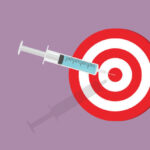The remote patient monitoring (RPM) market is complex, with various remote patient monitoring companies offering related but distinct solutions. Some offer RPM services, while others provide RPM software. Still, others focus solely on manufacturing or distributing RPM devices. Understanding the key differences between what remote patient monitoring companies offer is essential for healthcare organizations leveraging RPM’s power.
This article explores the diverse landscape of RPM companies, highlighting the key differences between the services, software, and devices they offer to healthcare organizations.
Remote Patient Monitoring Companies – Services
Healthcare systems face many challenges, from healthcare worker shortages to high admission rates. Remote patient monitoring companies present an opportunity to address these challenges. The remote patient monitoring software and services market is expected to grow at a 32.8% CAGR between 2022 and 2030. This projection underscores these technologies’ critical role in facilitating healthcare delivery.
With their remote monitoring, data analysis, and billing expertise, RPM companies also help enhance patient outcomes and facilitate early intervention. Comprehensive RPM solutions facilitate a turnkey platform that handles the entire RPM process.
The key responsibilities of remote patient monitoring services companies include:
- Supply patients with FDA-cleared medical devices.
- Facilitate data collection and transmission from devices.
- Analyze patient data, evaluate alerts, and collaborate with clinicians.
- Provide ongoing patient support and education.
By offering this comprehensive suite of services, remote patient monitoring services companies aim to simplify the implementation and management of RPM programs for healthcare providers, allowing them to focus on delivering high-quality care.
Remote Patient Monitoring Companies – Software
In contrast, some remote patient monitoring companies focus strictly on developing innovative software platforms that enable remote monitoring. These companies focus on creating innovative software that facilitates patient data collection, transmission, and analysis.
The key offerings of remote patient monitoring software companies include:
- Robust RPM software platforms that integrate with various devices.
- Advanced data analytics capabilities to identify health trends.
- Intuitive clinician dashboards for easy patient management.
- Integration with telehealth solutions for virtual care delivery.
- Patient-facing tools to promote engagement in self-care.
This specialized approach allows healthcare providers to leverage RPM within their existing systems and workflows.
Remote Patient Monitoring Companies – Devices
In addition to RPM services and software, some remote patient monitoring companies focus solely on manufacturing and distributing the devices needed for successful RPM programs. These device-centric companies ensure healthcare organizations have access to high-quality, FDA-cleared medical technologies.
Tenovi simplifies RPM programs for RPM services and software companies in the following ways.
- Device Provisioning: Provides a suite of 30 FDA-cleared medical devices that are accurate, pre-paired, easy to use
- Cellular-Connected Gateway: Aggregates data from multiple connected devices.
- Data Collection and Transmission: Aggregate data from multiple devices and transmit to the client or Tenovi RPM platform.
- Fulfillment: Enabling providers to order and send devices directly to patients through an integrated RPM dashboard.
- Measurement Adherence: Improving patient adherence to vital sign measurements through intuitive device designs and visual cue systems.
- Technical Support: In-house support and HIPAA-compliant ticket system. 1-2 hour response time.
Tenovi enables RPM services and software companies to simplify the implementation and management of RPM programs, allowing them to focus on delivering high-quality care.
Remote Patient Monitoring – Common Devices
To ensure the success of RPM programs with remote patient monitoring companies, high-quality, FDA-cleared RPM medical devices must seamlessly integrate with RPM services and software. Below are 7 examples of commonly used RPM devices and how they benefit healthcare providers.
- Remote blood pressure monitors calculate heart rate and blood flow, making them valuable for patients with hypertension. In addition, by monitoring blood pressure at home, RPM devices help lower hospital admissions for patients with this prevalent condition.
- Remote glucometers offered through remote patient monitoring companies automatically measure and transmit blood glucose levels with blood glucose meters—this aids patients with diabetes in continuous monitoring to prevent hypoglycemia and hyperglycemia.
- Remote pulse oximeters are small devices that measure blood oxygen levels by attaching them to a patient’s finger. Frequently used for patients with respiratory conditions, pulse oximeters enable remote monitoring and timely responses to managing several health conditions.
- Remote patient monitoring scales allow patients to track their weight daily, allowing physicians to closely monitor weight changes that could impact medication dosages or chronic conditions. By identifying trends, RPM scales help providers identify dangerous risk factors before they become emergencies.
- Remote peak flow meters are handheld remote patient monitoring telehealth devices that measure peak expiratory flow using Bluetooth or cellular connections. When patient data is captured on the RPM medical device, it is transmitted securely to a clinician’s software portal. Many RPM devices offer patients easy-to-use tools that help engage active participation in care management.
- Remote patient monitoring thermometers detect a patient’s temperature, an early indicator in conditions such as infections, the flu, and COVID-19. Cellular and Bluetooth thermometers provide accurate readings by scanning the forehead or ear.
- Smartwatches are used with RPM to track heart rate, steps, sleep, and more, providing healthcare providers valuable insights into patients’ daily routines. In addition, wearable RPM devices offer insights into the daily health levels of chronic care patients.
Benefits of Working with Remote Patient Monitoring Companies
Remote patient monitoring companies that offer devices bring numerous benefits to healthcare providers. Innovative remote health monitoring companies enhance the quality of patient care and streamline healthcare delivery. Furthermore, remote patient monitoring companies often offer user-friendly platforms. Moreover, some offer analytics tools that enable healthcare providers to manage and analyze patient data and conduct billing efficiently. Remote patient monitoring companies that provide devices offer many benefits to healthcare providers. Here are some benefits:
Revenue Generation
RPM devices provide clinicians with real-time patient data, enabling them to provide care without in-person visits. In addition, these devices offer a comprehensive view of patient data, facilitating better monitoring of chronic conditions. RPM solutions increase billable hours by tracking phone calls and messaging time. They also reduce patient no-shows, improving overall productivity and giving practices a competitive edge.
Improve Workflow with Less Burnout
A recent AMN Healthcare survey found that 30% of registered nurses are considering leaving nursing. This crisis has been deemed a national emergency by the American Hospital Association as the scarcity of healthcare staff becomes increasingly dire.
Remote patient monitoring companies can help alleviate the burden on overworked clinicians by reducing the number of in-person patient visits. By streamlining workflows RPM solutions can play a crucial role in combating healthcare staff burnout. Clinicians are empowered to focus on high-priority cases and deliver quality care rather than being overwhelmed by a steady influx of patients.
This shift can increase job satisfaction, improve work-life balance, and better retention of valuable healthcare personnel. Implementing a robust RPM program, supported by suitable devices and service partners, enables healthcare organizations to optimize their operations and support the well-being of their clinical staff – a critical step in addressing the nationwide shortage of healthcare workers.
Access to Quality Medical Care
With the widespread adoption of telehealth and RPM, medical care is becoming more accessible in rural areas. Recognizing the importance of expanding healthcare services and improving health outcomes, the Health Resources and Services Administration (HRSA) offers various grant programs to fund rural telehealth projects.
These programs prioritize the enhancement of healthcare services, the expansion of access, and the advancement of telehealth services in rural communities. The HRSA’s commitment to supporting and promoting telehealth initiatives in rural areas underscores these technologies’ significant role in bridging the gap in healthcare accessibility.
Understanding Remote Patient Monitoring Companies
When evaluating remote patient monitoring companies, it’s crucial to understand the devices they offer and how they align with patient needs. Tenovi, a leading RPM device and solution provider, guides the selection and management of devices, ensuring they meet organizational requirements.
Remote patient monitoring companies are helping to improve healthcare delivery and patient outcomes and enhance provider efficiency. By carefully selecting suitable RPM devices and partners, healthcare organizations can deliver comprehensive, accessible, and convenient care to patients in the comfort of their homes. Discover the power of Tenovi FDA-cleared remote patient monitoring devices and remote patient monitoring data aggregation solutions. Book a consultation and free demo today.






